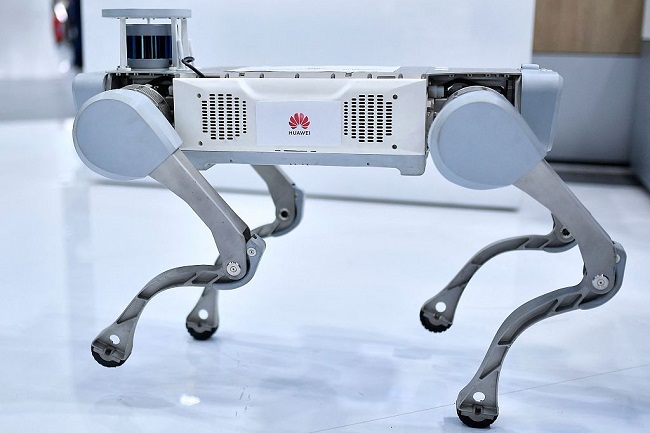Innovations make country major player in robot sector

A picture taken on Feb 28, 2023 shows the animal-shaped robot powered by ModelArts of Huawei Cloud at the Mobile World Congress (MWC). [Photo/VCG]
Altogether 56,000 industrial robots were sold in the Chinese market in 2014, a year before the first session of the World Robot Conference in Beijing. However, only 12,000, or about 26 percent of those, were manufactured in China, and they were mostly low-end products.
As the 10th session of WRC kicks off on Wednesday, the domestic production of robots for industrial use had risen to 430,000 in 2023, while 7.8 million others were service robots, making China a major player in the global robot sector. The past 10 years, in which 10 WRC sessions have been organized in Beijing, have seen the fast, comprehensive growth of the robot industry, which would not have been possible without innovations in technology.
Modern robots have four key parts, namely a controller to send commands, servo drive to generate appropriate electric current to drive the motor, servo motor to move the joints, and a reducer to decrease speed so as to enhance precision. Some articles have equated the four key parts to the brain, nerves, muscle and ligament of a person, the aim being to help the robots move their "limbs" as precisely as human hands. For all these four key parts, China relied heavily on imports in 2014; now, 10 years later, according to the WRC, comprehensive production lines for the four key components have been formed, with their technological levels significantly enhanced to be competitive in the international market.
Another example might be artificial intelligence, which is being increasingly used in the manufacture of robots in China. In 2014, the domestically manufactured robots were in their nascent stage. Today, armed with the latest AI technology, they have turned into six-leg guide dogs helping the visually impaired, as displayed by Shanghai Jiao Tong University in July; or evolved into robotic nurses guiding senior citizens, as shown at the 2024 China Humanoid Robot Developers Conference in Shanghai in June.
These are just the tip of the tech iceberg, for mode recognition, machine learning, brain science, big data and more are involved in the latest generation of robots. It's because of innovations that China has enhanced both the quantity and quality of its robots over the past 10 years.


